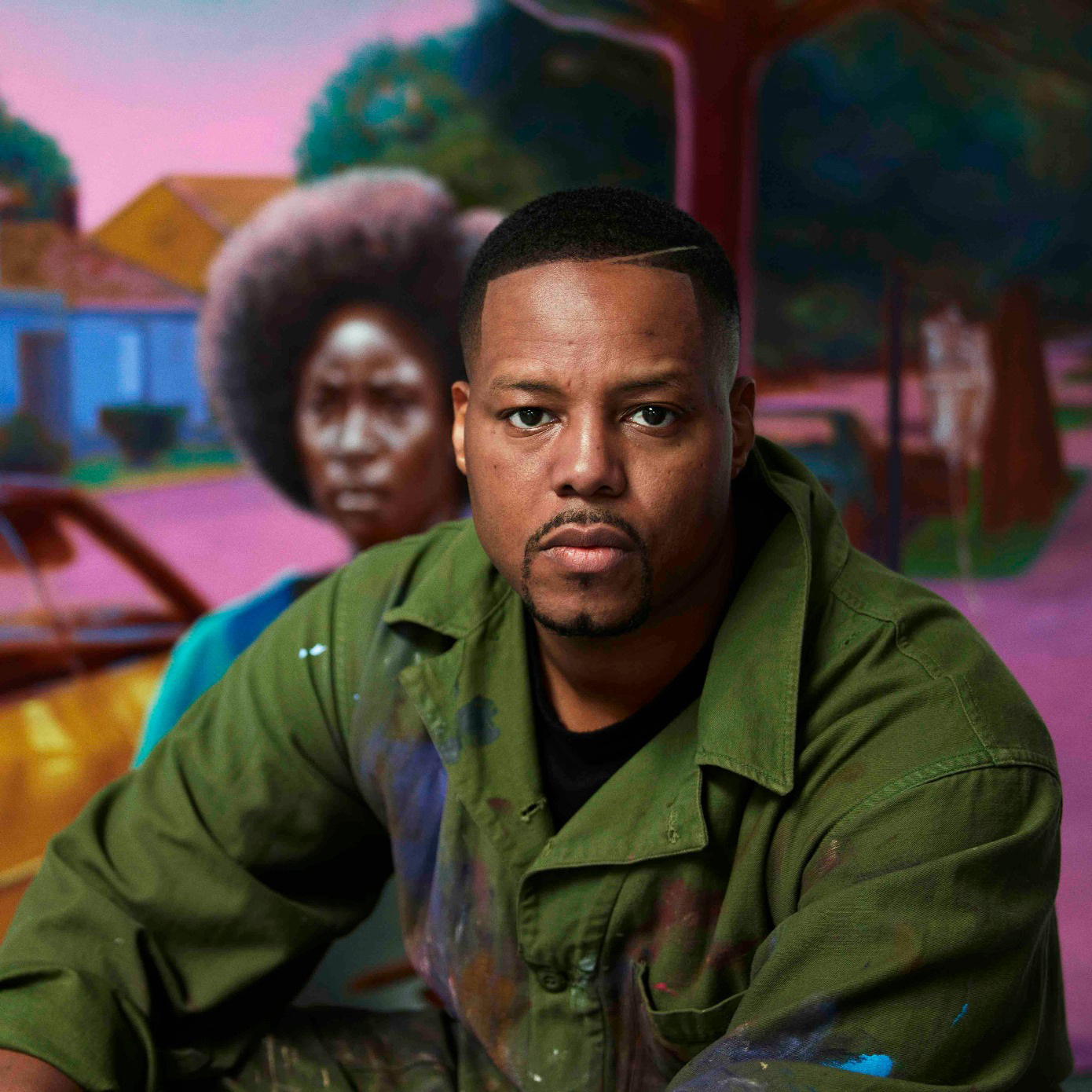![Dineo Seshee Bopape’s exhibition view of UNTITLED (OF OCCULT INSTABILITY) [FEELINGS], Palais de Tokyo (23.06 –11.09.2016). Courtesy of the artist photo by Aurélien Mole.](https://sistaticv2.blob.core.windows.net/cultured-mag/img/2017/08/PdT-2016-Dineo-Seshee-Bopape-018-1.jpg)
The sun’s grip on the Emirates is tenacious. The sun is tenacious in the Emirates. The gentle breeze from the Arabian Gulf doesn't quite make its way past the mini-city walls of Sharjah Art Foundation Art Spaces, and in Dineo Seshee Bopape's en plein air installation for the 2017 biennial, the shadows cower closely to their objects.
It's the sun that activates +/-1791 (monument to the Haitian revolution 1791) sotto voce as thick glass vessels throwback the sunlight; the scent of oils and minerals, herbs and clay waft seductively through the air; and plastic retainers of petrol and seawater find their levels shifting ever so slightly. Dineo’s work relies on a directness that explores the psychology of liberations, the collective stickiness of trauma, Black Marxism, revolution, and memory.
“The work changed over time,” Dineo said during a lecture at Concordia University in Montreal. “It’s known that the Haitian Revolution is almost a beacon to all the cries for freedom... It was a way to pay homage to the spiritual seers.”

Born in Polokwane, South Africa on an October Sunday in 1981, Dineo is the daughter of teachers and the sister of Mo Laudi, a music producer and DJ based in Paris. She was young when she first left the small city in the north: at five-years old, her parents moved the family to the UK to pursue their master’s degrees. She was later sent to an all girls’ boarding school in Durban, more than 500 miles south of her birth city. It’s where she first pursued art before ending up in Amsterdam to study at De Ateliers and on to New York for her MFA from Columbia University, which she received in 2010.
Since leaving the city, she’s returned to South Africa, settling in Johannesburg and opening an independent art space with Gabi Ngcobo, who was on the curatorial team of the 32nd Sao Paulo Bienal and recently named the curator of next year’s Berlin Biennial, and Sinethemba Twalo, an artist and writer.
In the last 18 months, there’s been a swell of activity: four biennial appearances. Since 2015, she's exhibited major projects at Marrakech Biennial 6, 32nd São Paulo biennial, Palais de Tokyo (Paris), Séoul Museum of Art, Art in General (New York), La Biennale de Montréal 2016, and Darling Foundry (Montreal), among others. She was included in the lauded Younger Than Jesus triennial at the New Museum in 2009 and Kara Walker’s Ruffneck Constructivists at ICA Philadelphia in 2014.

The announcement of her winning the Sharjah Biennial Art Prize this past March was followed up less than a week later with another: the Future Generations Art Prize. “I think probably one of the things that counted in Dineo’s favor is the sense of the momentum that she has,” said Nicholas Baume, director of Public Art Fund and a juror of this year’s prize. “The fact that not only had she done this powerful piece in Kiev but that it came on the heels of very strong projects as well. It really felt that she was at an inflection point.”
Taking home the latter award established seven years ago for young artists means the 35-year-old Johannesburg-based artist is included in the eponymous group exhibition for all 21 shortlisted artists in conjunction with this year's Venice Biennial. She is also supported with a solo show at Ukraine’s PinchukArtCenter in 2018 and $100,000, almost two-thirds of which is in cash.
“Dineo’s works function as a poetic memento, a call for attentiveness, care, remembering, an obligation to reconsider human condition today,” said Anna Smolak, curator for PinchukArtCenter.




